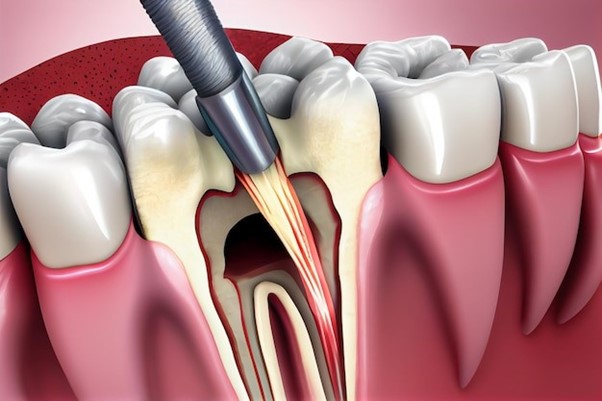When you hear the words "root canal," it often evokes fear and anxiety. However, understanding the purpose and process of root canal treatment can help alleviate these concerns.
Root canal treatment, also known as endodontic therapy, is a dental procedure performed to save a damaged or infected tooth, relieve pain, and restore oral health.
Why Is Root Canal Treatment Necessary?
Root canal treatment becomes necessary when the pulp, the innermost soft tissue of a tooth, becomes infected or damaged. This can happen due to various reasons, including:
Deep Decay: Untreated dental cavities can penetrate deep into the tooth, reaching the pulp.
Trauma: A blow to the tooth can cause internal damage or lead to pulp exposure.
Cracks or Fractures: Cracks or fractures in the tooth can expose the pulp to bacteria.
Repeated Dental Procedures: Multiple dental procedures on the same tooth can compromise its pulp.
Signs and Symptoms
Patients may experience the following symptoms when a root canal is needed:
- Severe toothache
- Increased sensitivity to hot or cold foods and beverages
- Swelling and tenderness of gums
- Abscess formation
- Darkening of the tooth
The Root Canal Procedure
A root canal procedure typically involves the following steps:
Diagnostic Evaluation: The dentist will perform X-rays to assess the extent of damage and plan the treatment.
Local Anesthesia: The tooth and surrounding area will be numbed to ensure a painless procedure.
Isolation: A rubber dam is placed around the tooth to keep it dry and free from saliva.
Access Opening: The dentist creates a small opening in the crown of the tooth to access the pulp.
Pulp Removal: The infected or damaged pulp is carefully removed.
Cleaning and Shaping: The root canals are cleaned, disinfected, and shaped to receive a filling.
Filling: The empty root canals are sealed with a biocompatible material called gutta-percha.
Restoration: A crown is often placed on the treated tooth to restore its strength and function.
Post-Treatment Care
After a root canal, patients should follow these guidelines:
Pain Management: Over-the-counter pain relievers can help manage any post-treatment discomfort.
Oral Hygiene: Maintain good oral hygiene practices, including brushing, flossing, and regular dental check-ups.
Diet: Avoid chewing on hard or sticky foods immediately after the procedure.
Follow-Up Appointments: Attend any recommended follow-up appointments to ensure the tooth heals properly.
Benefits of Root Canal Treatment
Root canal treatment offers several advantages:
- Pain relief
- Preservation of natural tooth
- Prevention of further infection
- Improved oral health
Understanding root canal treatment can ease anxiety and misconceptions surrounding the procedure. If you experience symptoms like severe toothache or swelling, consult with your dentist promptly.


